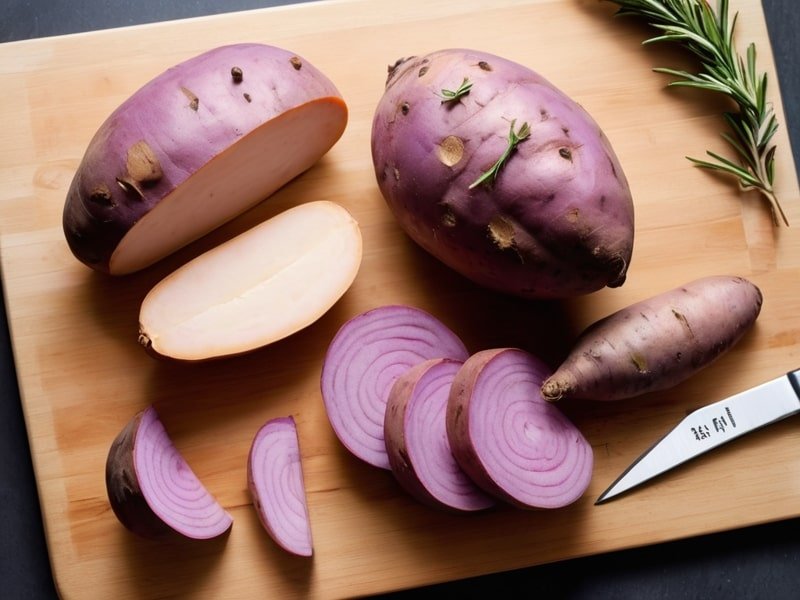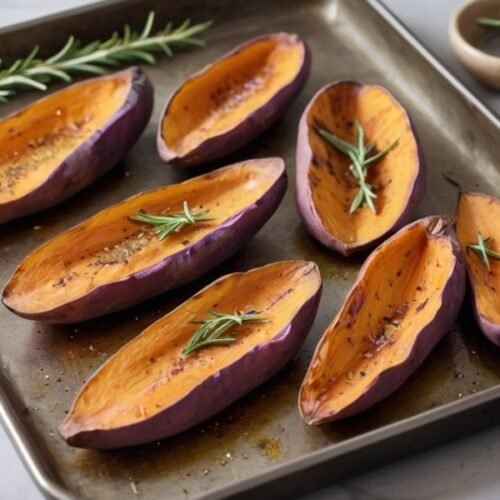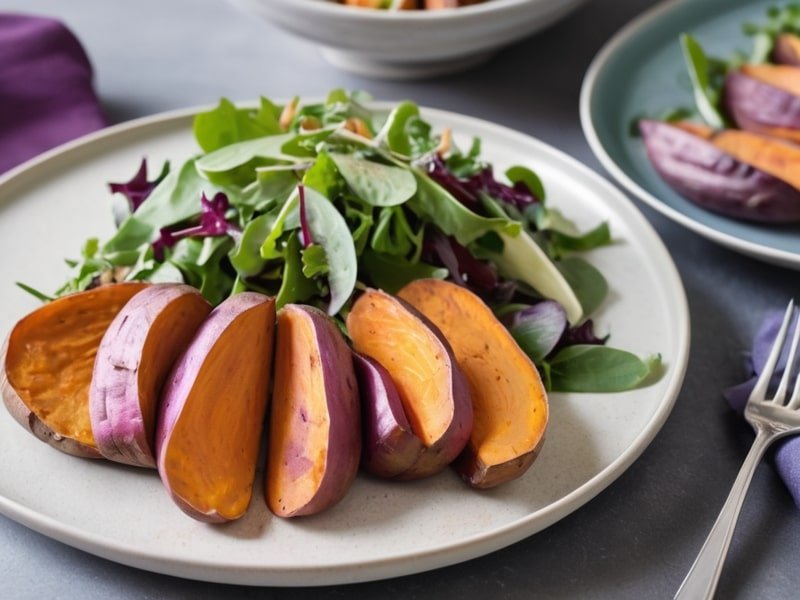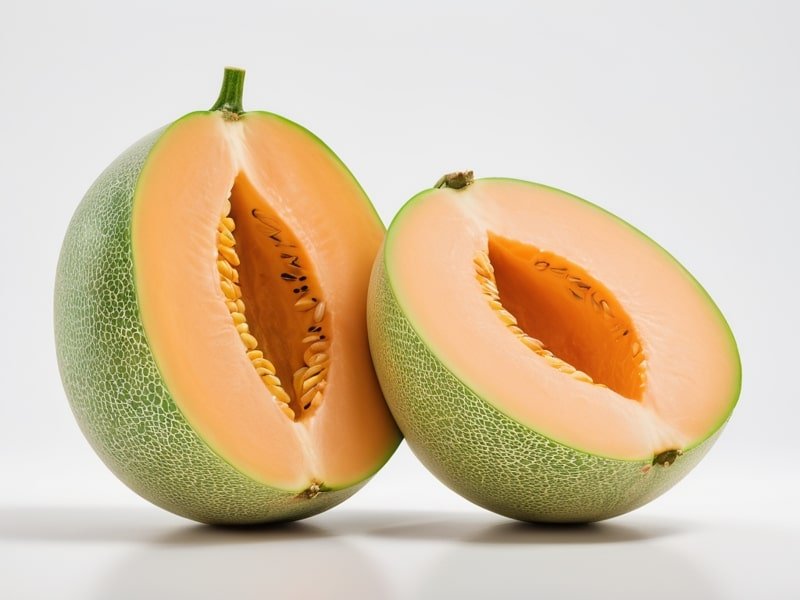Last updated on May 12th, 2025 at 10:18 am
Have you tried Murasaki sweet potatoes yet? If not, you’re seriously missing out! These beauties aren’t just about looks—though their purple skin is pretty eye-catching—they’re packed with flavor, nutrition, and versatility. Think of them as the cooler, nuttier cousin of your regular sweet potato.
Whether you’re roasting them for a quick dinner side or using them in a creative new recipe, Murasaki sweet potatoes are here to make your meals just a little more exciting (and a lot more colorful). Let’s dig into why these tubers deserve a spot on your plate!
What Makes Murasaki Sweet Potatoes Unique?

So, what’s the deal with Murasaki sweet potatoes? First off, let’s clear up a common misconception—they aren’t Japanese imports. While inspired by Japanese varieties, they’re grown right here in the U.S., mainly in California. But don’t let that fool you; their nutty, chestnut-like flavor brings a touch of global flair to your kitchen.
Here’s what sets them apart:
- Looks: That deep purple skin? Total showstopper. And the creamy white flesh inside adds a nice contrast.
- Taste: They’re not as sugary as the orange ones you’re used to—more earthy and nutty, like a little taste of autumn in every bite.
- Texture: Firm and slightly drier, they hold their shape beautifully when roasted or grilled. No mush here!
- Shelf Life: Thanks to their thicker skin, they last longer than their softer-skinned cousins. Translation? More time to figure out how you want to cook them!
Check out our guide to the flavorful Crenshaw melon: Crenshaw Melon. Perfect for fruit enthusiasts!
The Health Benefits of Murasaki Sweet Potatoes

Murasaki sweet potatoes aren’t just delicious—they’re little nutrition powerhouses, too. Think of them as your tasty secret weapon for better health.
Why You’ll Love Them:
- Fiber for Days: Keeps your digestion happy and helps you stay fuller longer. (Who doesn’t want that?)
- Antioxidant Boost: The purple skin isn’t just pretty—it’s loaded with anthocyanins, which help fight inflammation and support overall health.
- Vitamin Power: From Vitamin A for your eyes to Vitamin C for your skin, these tubers pack a punch.
- Low Glycemic Index: They’re a slow-burn carb, meaning no sugar spikes. Great for anyone keeping an eye on their blood sugar.
And did I mention they’re naturally gluten-free? Whether you’re gluten-sensitive or just want to mix things up, they’re a great grain-free alternative.
Discover an easy roasted Murasaki sweet potato recipe on Morocooked for a delicious, nutty side dish!
How to Cook Murasaki Sweet Potatoes
The best thing about Murasaki sweet potatoes? They’re ridiculously versatile. You can bake them, roast them, fry them—heck, you can even mash them if that’s your thing. Here are some foolproof ways to cook them:
1. Roast ’Em
Roasting brings out their natural sweetness and gives them that perfect crispy-on-the-outside, soft-on-the-inside vibe.
- Pro Tip: Sprinkle with a little smoked paprika or cinnamon for an extra flavor kick.
2. Grill ’Em
If you’re firing up the barbecue, don’t forget these purple gems. Grilling gives them a slightly smoky flavor that’s hard to beat.
- Pro Tip: Brush with olive oil and a dash of garlic before throwing them on the grill.
3. Mash ’Em
Murasaki mashed potatoes? Yes, please! Their nutty flavor makes them a great twist on the classic side dish.
- Shortcut: Add a splash of coconut milk or a knob of butter for creamy perfection.
4. Fry ’Em
For a fun snack, slice them thin and fry them into chips. Pair with your favorite dip for a party-worthy appetizer.

Herb-Roasted Murasaki Sweet Potatoes
Equipment
- 1 Baking tray
- 1 Mixing Bowl
- 1 Knife
Ingredients
- 4 medium Murasaki sweet potatoes washed and sliced into wedges
- 2 tbsp Olive oil
- 1 tsp Sea salt
- 1 tsp Fresh rosemary or thyme optional, chopped
Instructions
- Preheat your oven to 400°F (200°C).
- Slice the Murasaki sweet potatoes into wedges.
- In a mixing bowl, toss the sweet potatoes with olive oil, sea salt, and optional herbs.
- Spread the potatoes evenly on a baking tray.
- Roast for 30-35 minutes, flipping halfway through, until golden and slightly crispy.
- Remove from the oven and let them rest for 5 minutes before serving.
Notes
Conclusion
Murasaki sweet potatoes are more than just a pretty face in the produce aisle—they’re a flavorful, nutritious, and versatile ingredient that can take your meals to the next level. Whether you roast them to perfection, mash them for a nutty twist, or slice them into chips for a crispy snack, these purple-skinned gems are sure to impress.
So why not give them a try? With their unique flavor and health benefits, Murasaki sweet potatoes just might become your new kitchen favorite. Once you taste their earthy goodness, you’ll wonder how you ever lived without them. Happy cooking!
FAQs About Murasaki Sweet Potatoes
1. Can you eat the skin of Murasaki’s sweet potatoes?
Absolutely! The skin is packed with fiber and nutrients. Just give it a good scrub before cooking.
2. Are they sweeter than orange sweet potatoes?
Not quite—they’re more earthy and nutty, which is what makes them so versatile in savory dishes.
3. How long do they last?
Stored in a cool, dry place, they can last up to a month. (Good luck not eating them before that!)
4. What sets Murasaki sweet potatoes apart?
Their purple skin, white flesh, nutty flavor, and firm texture make them unique from orange sweet potatoes.
5. How do I store Murasaki sweet potatoes?
Keep them in a cool, dry, dark place. Avoid refrigeration to preserve their texture and flavor.


